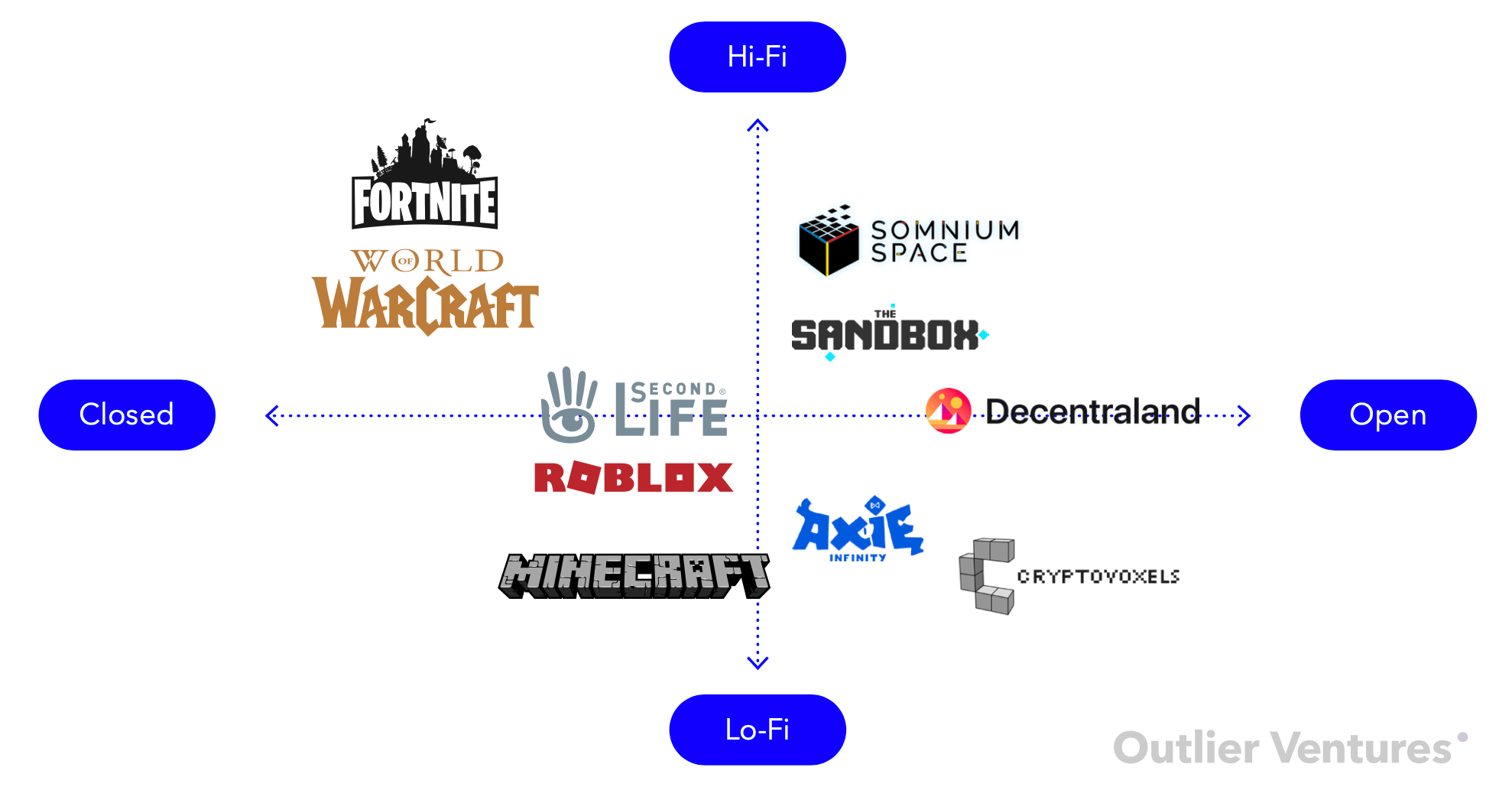Why Web3 Matters for Brands
Answering the “why” and the “what” of Web3 from the point of view of brands and other consumer facing businesses.

“Why should my company use Web3?”
It’s a question we’ve heard over and over at 3mint — from consumer brands, consumer marketplaces, and many other “Web2” companies — and it’s a fair one! Web3 is still a relatively young technology, and many of its most important benefits will take time to materialize. So why should brands care about Web3 today?
Over the past few months, our team has been on a mission to create a Web3 toolkit for Web2 companies, one that leverages Web3 technology to solve real problems that consumer-facing brands, marketplaces, and other companies face today.
Our quest to identify and then solve a real problem has led us to circle around seriously meaty questions like: what does the future of loyalty and community look like? And: how does Web3 change the nature of customer engagement?
We’ve been busy. Over 200 interviews and customer conversations later, we have real conviction around the problem space and the solution vectors to address it. Hint: It involves engaging customers in novel ways, leveraging new technology in the form of Web3 and the Metaverse.
The result of all this work has been, of course, the development of our Web3 engagement platform, which we announced earlier this week — but also, plenty of learnings we’d like to share. We’ve decided to package that knowledge into two white papers, with our goal being to answer clearly and concretely the big question on every brand’s mind: why should we leverage Web3?
Part 1, “Why Web3 Matters for Brands,” is about why (for today and for tomorrow). It’s accessible here. Our next white paper (coming soon) is about what to do and where to start.
If you don’t feel like reading a white paper, don’t fret — we’ve summarized the key points below.
What is Web3 all about?
Web3 is about ownership and interoperability of data, assets, and identity.
Let’s dissect that.
“Ownership” refers to the idea that the digital world needs an ownership layer to match the physical world’s. In the physical world, if I purchase a good, I get a receipt that proves my purchase and I can physically “store” it and use it while preventing anyone else from taking or using it: what’s mine is clearly mine. In contrast, it’s been basically impossible to replicate this concept of property rights on the internet, and this is increasingly problematic in a world where we spend more and more of our time and money online. Web3 changes this paradigm; specifically, NFTs are digitally-native records of ownership over data. This data can be a digital asset, transaction data, or even identity data.
With Web3, I can prove that I own a digital asset, that I am who I am — including all the many facets of my identity, and that I belong to a particular community. And I can do so independently of any centralized authority, such as a Google or Facebook or a state actor. This is important because it allows me to prove and secure my property rights — potentially even commercializing those rights, without any third party that could deplatform me. It allows me to prove who I am and what groups I belong to, without any dependencies on third parties. It allows me to maintain control over my personal data, without it falling prey to corporate entities or malicious actors who might manipulate or compromise it.
It’s also important because this property leads to “interoperability.” By shifting the onus of ownership to the individual — by giving the individual the tools to own and control their data frictionlessly, we are also paving the way for a truly universal and interoperable standard for data across the digital world. With Web3, everything from your ID to the assets associated with that ID can be read, interpreted, and interacted with by anyone.
And even if a consumer doesn’t necessarily want to take on more responsibility, it is a much better experience for them if they can transport their identity and associated data without having to recreate it in each digital environment they want to interact with. Right now, going from Amazon to Netflix to Target is like going to the doctor and having to fill out the same form over and over again. Web3 introduces a world where your identity isn’t stored in a silo, but stored with you and shared when desired.
So when we say that Web3 is important for brands, it comes down to believing that increasingly active and empowered consumers are going to demand more ownership and control over their identity and their data, and that while this may lead to reduced control in the short term, embracing this new environment has incredible upsides through the interoperability inherent in Web3.
That said, a key question brands are grappling with today is how Web3 actually helps them now — not in three or five or even ten years. The reality is that many of the benefits of Web3 will take time to fully materialize. Web3 has the power to completely change the way we interact with brands, and the way brands interact with each other. But most brands don’t have the luxury to think on such long time horizons; they face very real challenges and constraints today, and have objectives that need to be met in the next few months, not years.
With that backdrop in mind, it’s important to think about Web3’s benefits on a timeline, identifying what the benefits are in the short run vs. long term. In that light, it’s all about differentiating yourself today and positioning yourself for the future.
The Short Term
The short-term is clear, as decisions are driven by real problems that exist today.
Based on our interviews and research, today’s problems can be boiled down to the following:
- New consumers are coming to age and they are spending more time on vastly different platforms. US adults spend 7 hours per day online.¹ The top three virtual (gaming) platforms have over 400m MAUs.² 75% of children in the US use Roblox on a regular basis between the ages of nine and 12.³
- Consumers have higher expectations around personalization than ever before: “83 percent of consumers expect personalized content and experiences from their favorite brands.”⁴
- Moreover, consumers have more choices than ever before. 77% of US consumers have tried new shopping behaviors, including new channels, stores, and brands — since Covid.⁵ And these choices are guided by more intention and motive. Consumers care about a brand’s “cultural credibility as much as [the product],” which is itself impacted by how the brand’s image reflects a consumer’s personal values.⁶ For example, younger consumers are more likely to shop at a brand that prioritizes sustainability.
- Technology is changing in ways that make relying on programmatic marketing tools obsolete. With Apple’s privacy-focused changes in iOS 14, and Google considering similar changes, it’s becoming much harder to track individual user behavior, with consumer brands feeling a 10–35% impact on revenue from these methods.
And this isn’t just hypothetical — the data is clear. Customer Acquisition Costs (CACs) are up 222% over the past 8 years, with a 41% increase in just the past year.⁷
So, where does Web3 step in? We see two major ways.
1. Build Stronger, More Invested Communities

The nature of distribution has changed, and CACs have been rising for nearly a decade. One place brands can invest in that is both engine and fuel for distribution is community.
Community is loyalty, and consumer brands should do what they can to maximize it. One of the most powerful ways to strengthen community is to align incentives by providing a sense of ownership.
By aligning incentives between brand and community member, you are redefining the relationship between brand and consumer, encouraging cooperation toward a common goal and a more participatory consumer experience — one where the customer is more active, vocal, and engaged in the direction and outcomes of the brand. That may manifest in contributing to a product roadmap or a new set of flavors or colors; shaping the company vision and values; or being invited to online and offline events that are exclusive to the community members. Make your community feel valued as a stakeholder, and they will repay you in spades. In this new paradigm, the customer wins when the brand wins.
2. Embrace Composable, Multiplayer Commerce

By building on a decentralized, trustless base layer for data, Web3 turns adversarial games into coordination games — by that we mean that competitive relationships can be turned into cooperative ones. This has huge implications for brands, as they now have the opportunity to turn siloed communities and loyalty programs into ecosystems of loyalty where complementary brands and creators collaborate and enhance each other, leading to a better experience for the end user.
As Alex Danco of Shopify has pointed out, it’s not that building loyalty networks is impossible via traditional loyalty schemes, membership programs, promo codes, and account-based gating systems. But the catch is that “your gating rules will exist as dependencies that refer back to accounts and permissions,” which can become very complicated — from an accounting and technological perspective — very fast once you start going beyond simple bilateral agreements.⁸
In contrast to account-based systems, where accounts necessarily reside within a brand’s siloed systems, an NFT is more like a file that can be read and written to by anyone running the same operating system (ie. using Web3).
And brands should be excited about the possibilities here. Whereas on the face of it, this sounds like a loss of control by opening your customer base to the external world, it represents a tremendous opportunity for growth. Embracing multiplayer commerce means embracing new creators and complementary brands with their own engaged audiences.
The Long Term
As Web2 companies start building on Web3, and as Web3-native brands emerge to contend with their Web2 peers on a maturing technological foundation, the nature of what’s possible on Web3 will change completely.
3. Leverage New Distribution Channels
If you want to benefit from the influx of eyeball traffic heading into new venues and platforms, if you want to shape the next generation of consumers, you must be there. And instead of seeing this as a pure cost, consider it an investment and an opportunity to leverage and monetize your IP in novel ways.

Being present is step one, but what’s more interesting is that these new venues also represent new distribution channels. They are new places to sell (e.g. metaverse platforms), with new distribution mechanisms (cryptocurrencies, publicly viewable crypto wallets, etc.) and as a result new creators that have recognized the opportunity — giving fresh meaning to the creator economy.
4. Build Genuine, Multi-Reality Commerce Experiences

We’ve seen glimpses of the future already: you start shopping by trying something on in-store, that experience converts online, and you end up weeks later at a community-only event hosted in a virtual platform.
Today, it still feels somewhat disjointed and unconvincing. But the promise of the open Metaverse is that it will reduce the friction between our digital and physical worlds, streamlining and enriching our experience with more data and context. What that means for commerce is that the surface area for distribution is expanding, and the user experience can be dramatically improved by providing more continuity, more convenience, and more personalization.
NFTs are the first major unlock here, as they not only represent a record of ownership over a digital asset, they can also provide physical goods with a digital counterpart (often called digital twins), creating what Nic Carter has termed “full-stack” consumer products.⁹ This link between physical and digital is the key to create seamless experiences that cross dimensions. Now, consumers can prove their ownership over natively-digital as well as physical-first products online, they can verify the provenance of these goods, trade them or use them as collateral, and of course, they can bring these items into natively-digital worlds, like the metaverse platforms we’ve mentioned above, which are only set to improve over time.
As Nic points out, years from now “people will think of purely analog luxury goods as a kind of anachronism. They will feel naked without their digital counterpart.” This makes complete sense when you think about how much time people already spend online today, and how that time is moving from “traditional” online channels to more immersive ones.
Conclusion
Web3 is about ownership and interoperability of data, assets, and identity. If you, like us, believe that the modern consumer is going to demand a more participatory and interactive experience in ecommerce and beyond, it is imperative to understand how you can not only provide them with more control over their identity and data online, but actually benefit from that shift — today and in the future.
Web3 is important in the short term as a differentiation mechanism in response to how acquisition and retention are changing as a result of technology shifts. Embracing Web3 means building supercharged communities that can serve as powerful engines for both retention and acquisition, while embracing multiplayer commerce.
The long term is about positioning for more substantial shifts in distribution that will render today’s models completely obsolete. It’s essential for brands and consumer-facing Web2 companies to prepare for this future, capturing the benefits of multi-reality commerce powered by new distribution channels.
About 3mint
3mint is the all-in-one Web3 customer engagement platform for brands, with a toolkit of enterprise-grade APIs and SDKs that enable brands to build any Web3 product or experience at scale — without any of the complexity associated with blockchains. Get in touch here!
References
[1] DataReportal, “DIGITAL 2022: GLOBAL OVERVIEW REPORT”
[2] Matthew Ball, “Virtual Platforms and the Metaverse”
[3] Matthew Ball, “A Manual to The Metaverse” on Invest like the Best
[4] McKinsey, “Coping with the big switch”
[5] ibid.
[6] High Snobiety and BCG, “Luxury 3.0”
[7] BusinessWire, “Brands Losing a Record $29 for Each New Customer Acquired”
[8] Not Boring, “Tokengated Commerce” — an interview of Alex Danco by Packy McCormick.
[9] Nic Carter, “Redeem-and-retain NFTs are the future of luxury goods”

